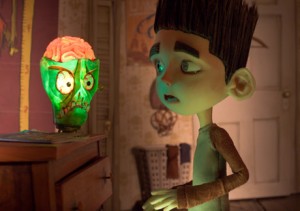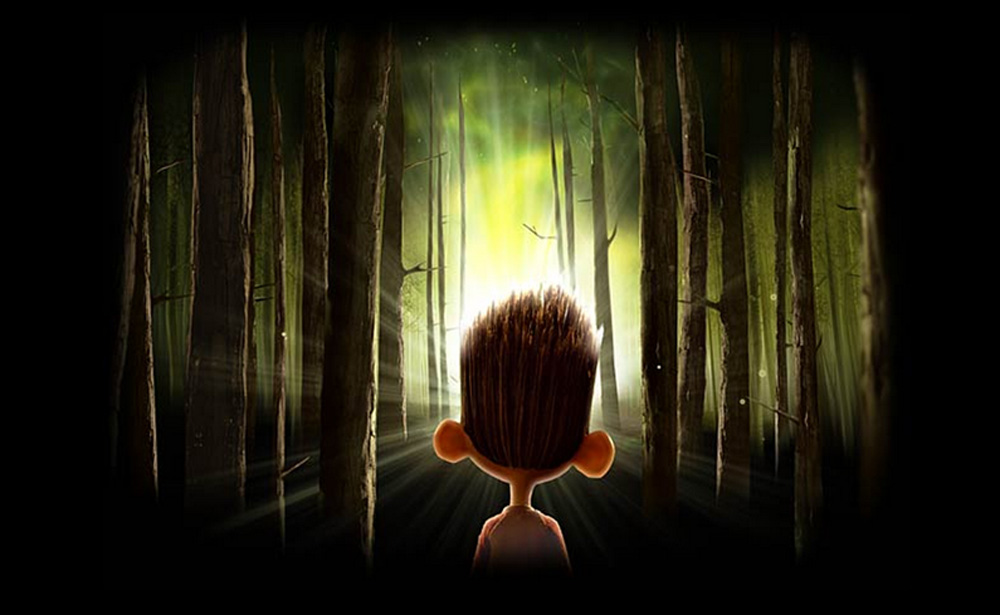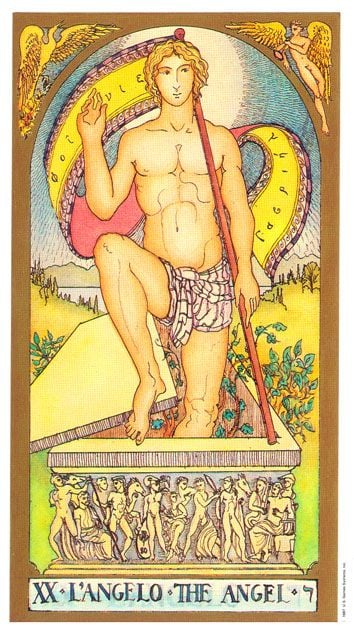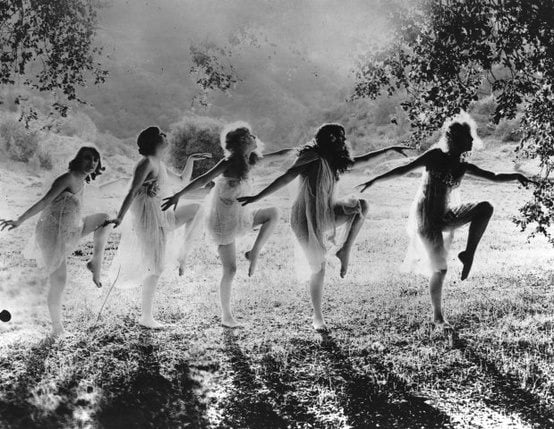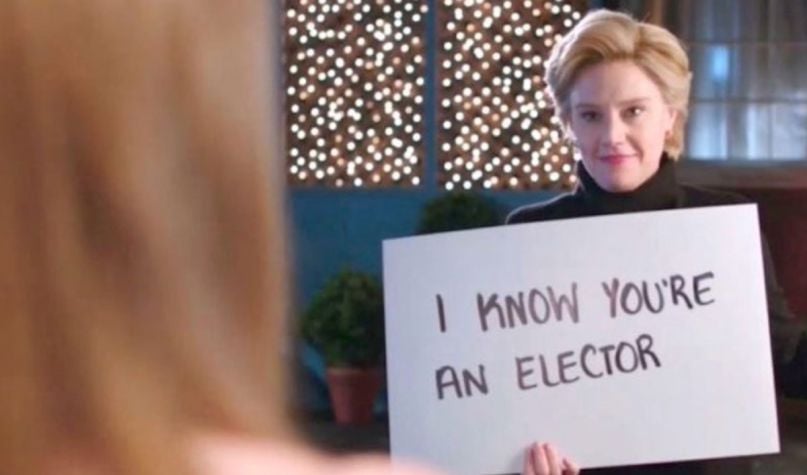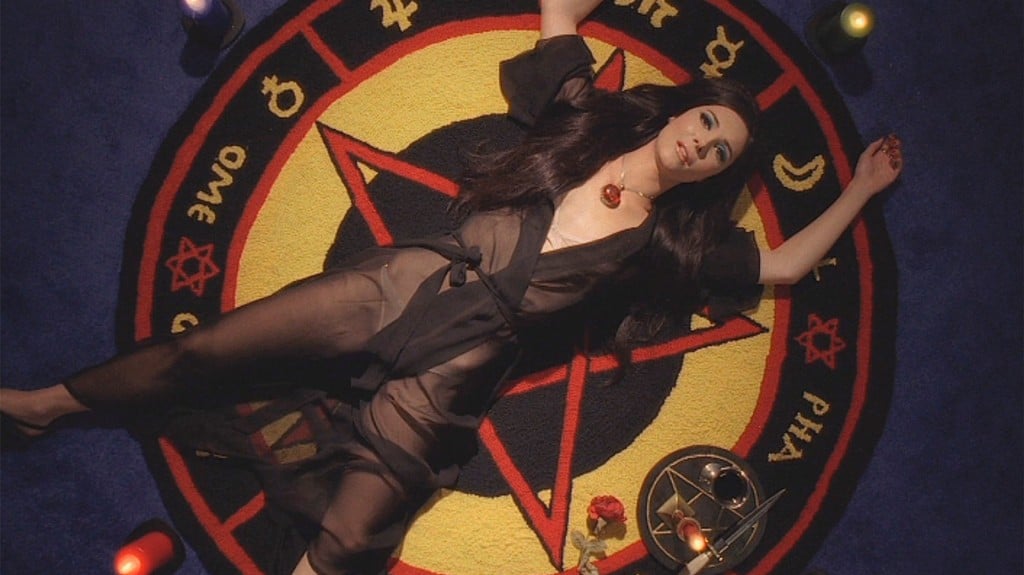Norman is a lonely small town kid who seems normal in every way, except for the fact that he sees dead people. Oh, wait that was another movie. No, this one is about a kid who is bullied and has no real friends but ends up becoming a hero to his whole town. No, wait, that was that other movie. Anyway, Norman’s mom and dad and snotty teenage sister just roll their eyes when they hear Norman taking to his dead grandmother. Kids at school write “Freak” on his locker and shove him down the hallway. Only the school’s fat scapegoat, a cheery chubster named Neil, teased as relentlessly as Norman, offers to be his friend. Norman’s only friendly exchanges are with the ghostly wraiths he passes on the streets on his way to school each morning.
Norman’s hometown of Blithe Hollow lives under the shadow of a 300 year old witch legend, and much like modern day Salem, Massachusetts, the town’s businesses flaunt this witchy history with tacky signage and slogans (Witchy Wieners is a neon-lit hot dog joint). Blithe Hollow is about to celebrate the tricentennial of its witch’s death (interestingly, Salem is about to rededicate its witch memorial), and Norman starts seeing dead people that become flesh: green zombie flesh.
The seven townsfolk who accused witch Agatha Pendergast are baaaaack, and they want braaaiinnnsss…or something. It’s not really clear what they want, but Norman knows he is the only one who can make them stop roaming the town, after they visit him with a frightening vision during the school play commemorating the witch’s trial and death (which opens with the kids in Colonial costumes singing a hilarious deadpan version of Donovan’s “Season of the Witch”). In the vision, Norman learns that he must find a book and read aloud from it to end the witch’s curse. The book is full of fairy tales and when reading it aloud fails to send the ghouls packing, Norman grows increasingly desperate.
 When the residents of Blithe Hollow see zombies in their midst, they know what to do: shoot ’em in the head! Norman tries for more esoteric solutions, but time is running out. The bigger threat is the witch herself, whose image appears in the sky as a huge roiling storm cloud. Norman’s final confrontation with Agatha happens in a sort of time-travel warp between the worlds of the living and the dead, and on that precipice the stories of a spooky kid who gets bullied and a witch consigned to hanging by her neighbors do not seem so very different.
When the residents of Blithe Hollow see zombies in their midst, they know what to do: shoot ’em in the head! Norman tries for more esoteric solutions, but time is running out. The bigger threat is the witch herself, whose image appears in the sky as a huge roiling storm cloud. Norman’s final confrontation with Agatha happens in a sort of time-travel warp between the worlds of the living and the dead, and on that precipice the stories of a spooky kid who gets bullied and a witch consigned to hanging by her neighbors do not seem so very different.
A lesson on bullying that references the North American witch trials? And why not?
Forget the fact that kids who are bullied for being “different” are victimized by those with more social clout than they have (the cool kids, the rich kids, the jocks and cheerleaders, the kids whose parents run the town, etc.). Forget that the “witches” of Salem and other sad Northeast villages were not witches at all but misguided teenagers and lonely widows and elderly crones who owned more property than their jealous neighbors. The selfish cruelty of the witch accusers is here laid bare as no different than the doltish brutality of the ignorant masses of “haters” who prey on the weaker ones among them, the ones who are different. Salem Village’s villagers took up pitchforks and cudgels; the citizens of Blithe Hollow wield 9mm pistols and brass knuckles.
But Paranorman‘s central message is not one of righteous anger or even injustice; it’s about compassion. There’s no use trying to understand why the bully bullies; it’s what they do. But you can be sure they’re also in pain. Norman stands up to his tormentors and to the wrathful spirit of Agatha Pendergast, the wrongly accused witch, with nothing more than a caring heart and a firm conviction that mean people suck. He comforts Agatha, a girl who lived 300 years ago, with something like real empathy, helping her understand that people act cruelly out of fear, and that meeting cruelty with cruelty isn’t the answer. And, eventually, things go back to normal, meaning that some folks evolve not one tiny bit. But some folks get just a tiny bit enlightened and that feels hopeful. The dead go to their rest, and the sun rises again over Blithe Hollow.
Maybe it’s a coincidence, but this film made me think of Damien Echols, one of the West Memphis Three, who will be celebrating their first year of freedom from eighteen years of wrongful imprisonment this coming Sunday, on August 19th. In recent Tweets, Damien has mentioned wanting to go to Salem, Massachusetts. It’s not surprising that the idea of this place thrums with such meaning and pathos for Damien, who lived through his own witch hunt and witch trial, and was sent to the gallows on a tide of fear, ignorance and prejudice. The search for justice can take a lifetime, or more than 300 years, or longer. The depths of forgiveness displayed by Damien towards his accusers is testament to the resilience of the human spirit. The central theme of mercy and compassion in Paranorman is similarly inspiring. I hope parents on the fence about bringing their kids will bear this in mind. (But do be aware: there are definitely some scary scenes that may be too intense for children under 8.)
Paranorman is a delicious thrill ride, and the brilliant stop-motion animation is heart-stopping. It’s hard to call it beautiful since the production design is steeped in the grotesque and grim. But it’s gorgeously done and exquisitely detailed. The voicing by Kodi Smit-McPhee as Norman, Anna Kendrick as his sister Courtney, and comic doyenne Elaine Stritch as his grandmother are very fine, and there are some fun cameos by John Goodman, Alex Boorstein and Casey Affleck, too. Be sure you stay seated until the very end of the credits (beautifully done in watercolors); you won’t be sorry.

